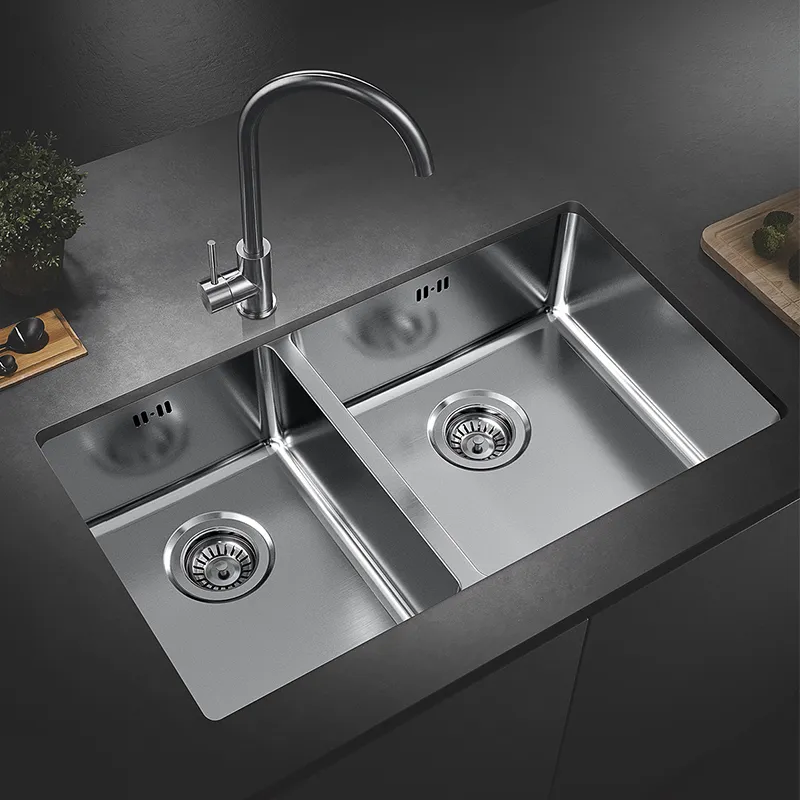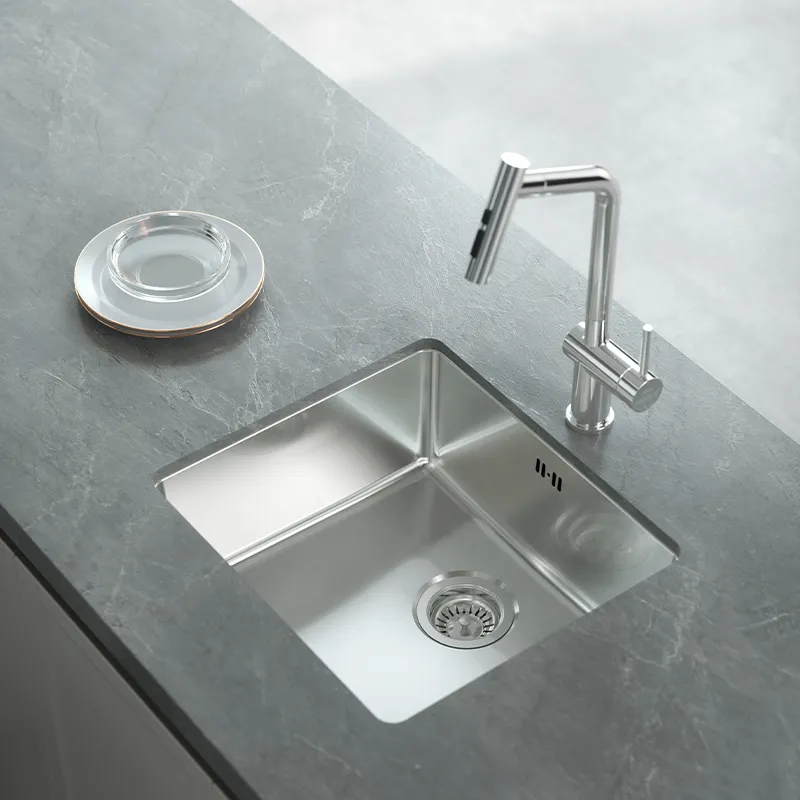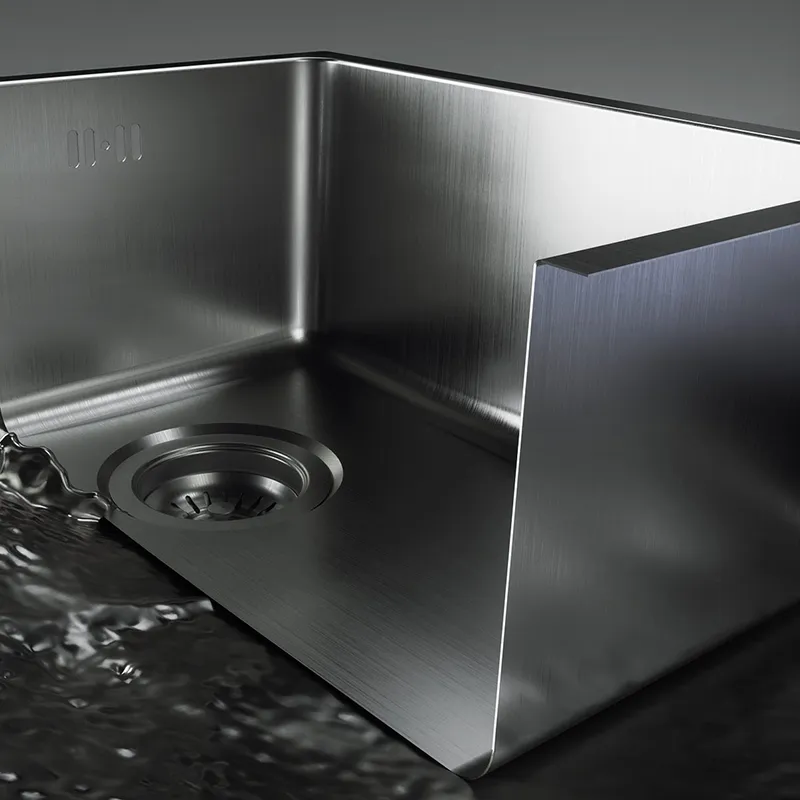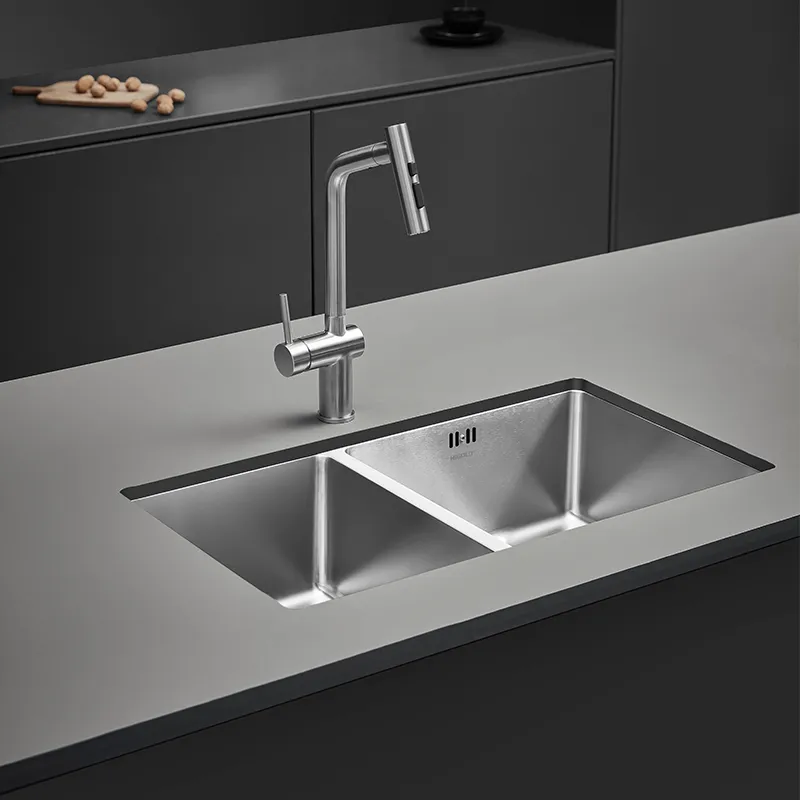The sink is an essential part of the kitchen. Whether it is washing food or washing dishes, the sink undertakes heavy daily work. Therefore, the material, design and durability of the sink are crucial to the kitchen experience. With the continuous development of kitchen design concepts, various new sinks have emerged. Among them, the "Pressed Sink" as a relatively new kitchen sink has gradually been favored by consumers.
What is a Pressed Sink? How is it different from a traditional sink? When choosing a kitchen sink, how do the characteristics and advantages of a pressed sink affect the user's choice?
This article will explore the definition, manufacturing process, common materials, advantages and application of a pressed sink in the kitchen to help consumers understand the uniqueness of this essential kitchen facility.

What is a Pressed Sink?
A pressed sink is a sink made by a mechanical pressing process. This sink is usually made of metal sheets (such as stainless steel) through pressure forming technology. Compared with traditional sinks, the manufacturing process of a pressed sink is significantly different. It uses mechanical equipment to press metal materials to form the basic shape of the sink. Compared with other sinks made by welding, casting, etc., the manufacturing process of the pressed sink is relatively simple and quick.
Pressed sinks are usually made of thicker stainless steel materials, and the shape of the sink is formed by the pressing process of a high-pressure press. The surface of the sink made by this method is usually very flat and smooth, with good pressure resistance and durability. At the same time, the pressed sink can also use different surface treatment processes, such as brushed treatment, mirror polishing, etc., to increase the beauty and practicality of the sink.
What is the manufacturing process of the pressed sink?
The manufacturing process of the pressed sink usually includes the following steps:
· Material selection: Pressed sinks are usually made of high-quality stainless steel. Common stainless steel materials include 304 stainless steel and 316 stainless steel. 304 stainless steel is widely used in the manufacture of kitchen sinks due to its corrosion resistance and oxidation resistance, while 316 stainless steel is suitable for the needs of more severe environmental conditions, such as seaside areas.
· Pressing: In the production process of the pressed sink, the selected stainless steel material is first cut into appropriate sizes, and then the metal sheets are pressed into the shape of the sink by a high-pressure machine. The key to the pressing process is to evenly force the metal material to form a precise sink profile.
· Edge treatment: The edge of the press-formed sink is usually trimmed. Through fine grinding or cutting processes, the edges of the sink are smoothed and possible sharp edges are removed. This process ensures the safety of the sink and increases the service life of the sink.
· Surface treatment: The surface of the pressed sink is usually further treated. Common surface treatment methods include brushing, sandblasting and mirror polishing. Brushing can give the sink a unique metallic texture, which is both beautiful and can effectively reduce scratches. Mirror polishing can make the sink surface smooth like a mirror, with a strong gloss and reflection effect.
· Installation preparation: After the above steps, the pressed sink will undergo final installation preparation, including drilling holes, processing drain outlets, and installing sink accessories. After these tasks are completed, the pressed sink can be put into use.

Comparison of Pressed Sinks and Other Sinks: What's the Difference?
As a new type of sink, pressurized sinks have some unique features and advantages over traditional sinks in terms of design and manufacturing process. Here are the main differences between pressurized sinks and other common sink types (such as under-counter sinks, above-counter sinks, etc.):
Manufacturing process:
· Pressed sinks: Made by pressing process, usually using thick stainless steel plates, formed by mechanical pressing. Pressed sinks have a flat and smooth surface and strong durability.
· Above-counter sinks: By placing the edge of the sink on the countertop, the sink and countertop joint are fixed by welding or bonding. Above-counter sinks often have higher edges, and special attention should be paid to the accumulation of stains on the edges when cleaning.
· Under-counter sinks: Unlike above-counter sinks, the edge of under-counter sinks is embedded under the countertop, making the sink flush with the countertop. This design provides a simpler appearance, but requires precise hole size when installing.
Durability:
·Pressure sinks: Due to their pressing process, pressure sinks usually have high resistance to compression and deformation. The surface of the sink is not easily affected by impact and scratches, so it has a long service life.
·Other sinks: Although other sinks (such as cast iron sinks, ceramic sinks, etc.) also have a certain durability, they may be more susceptible to damage from external impact than pressure sinks, especially when excessively collided or subjected to heavy objects.
Appearance design:
·Pressure sinks: Usually have a simple and modern appearance, and the surface treatment can be selected in a variety of ways (such as brushed, polished, etc.) to adapt to different kitchen styles.
·Other sinks: For example, ceramic sinks often have a retro and classic appearance, while stainless steel countertop sinks emphasize the gloss of metal.
Price:
·Pressure sinks: Due to their relatively simple and efficient manufacturing process, the cost of pressure sinks is usually moderate, so the price is more affordable.
·Other sinks: For example, cast iron sinks are relatively expensive due to their complex production process, while ceramic sinks are more expensive due to their high material cost.

What are the advantages of pressure sinks?
The reason why pressure sinks stand out among many kitchen sinks is mainly due to their many advantages:
· High durability: Pressure sinks are manufactured through a precise pressing process and have very high wear resistance and pressure resistance. Whether it is the impact of water flow in daily use or the effect of long-term pressure, the pressure sink can maintain a stable shape and is not easy to deform.
· Simple and beautiful design: Because pressure sinks usually adopt a simple design and undergo fine surface treatment, the surface of the sink has a modern metal texture, which is suitable for various kitchen styles. Surface processes such as brushed processing and mirror polishing not only make the sink more beautiful, but also effectively prevent the surface of the sink from being scratched or leaving stains.
· Strong corrosion resistance: Due to the use of stainless steel, the pressure sink has strong corrosion resistance. The sink can resist the erosion of acid and alkali substances and is not easily corroded by common kitchen detergents.
· Easy to clean and maintain: The surface of the pressure sink is flat and smooth, stains are not easy to adhere, and it is relatively easy to clean. In addition, the sink's heat resistance allows it to withstand hot pots or tableware, so it is not easily damaged by heat.
· Reasonable price: Compared with some high-end sinks (such as cast iron sinks, ceramic sinks, etc.), pressure sinks are usually more affordable and suitable for most families' budgets.

What are the applicable scenarios for pressure sinks?
Pressure sinks are very suitable for kitchen users who pursue high durability and simple and beautiful design. It is widely used in various kitchen environments, especially in commercial kitchens and home kitchens that require high frequency of use. The design of pressure sinks is not only suitable for modern style kitchens, but also matches well with traditional kitchen designs.
What Should I Expect When Ordering Customized Kitchen Sinks from Higold?
When ordering customized kitchen sinks from Higold, you can expect a seamless experience. We work closely with you to understand your requirements and ensure that every product meets your exact specifications. Our advanced production lines, including laser cutting and robotic welding, ensure precision and quality. Whether you're looking for wholesale options or a unique design for a special project, Higold offers affordable prices and discounts on large orders.


